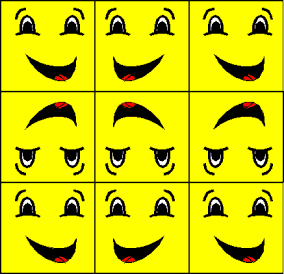|
|
|
|
Mirror Texture Address Mode |
The mirror texture address mode, identified by the TextureAddress.Mirror enumerated value, causes Microsoft Direct3D to mirror the texture at every integer boundary. Suppose, for example, that an application creates a square primitive and specifies texture coordinates of (0.0,0.0), (0.0,3.0), (3.0,3.0), and (3.0,0.0). Setting the texture address mode to TextureAddress.Mirror results in the texture being applied three times in both the u-direction and the v-direction. Every other row and column to which it is applied is a mirror image of the preceding row or column, as shown in the following illustration.

The effects of this texture address mode are similar to, but distinct from, those of the wrap mode. For more information, see Wrap Texture Address Mode.
Send comments about this topic to Microsoft. © Microsoft Corporation. All rights reserved.
Feedback? Please provide us with your comments on this topic.
For more help, visit the DirectX Developer Center